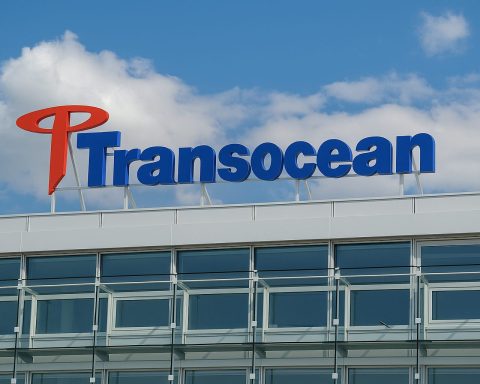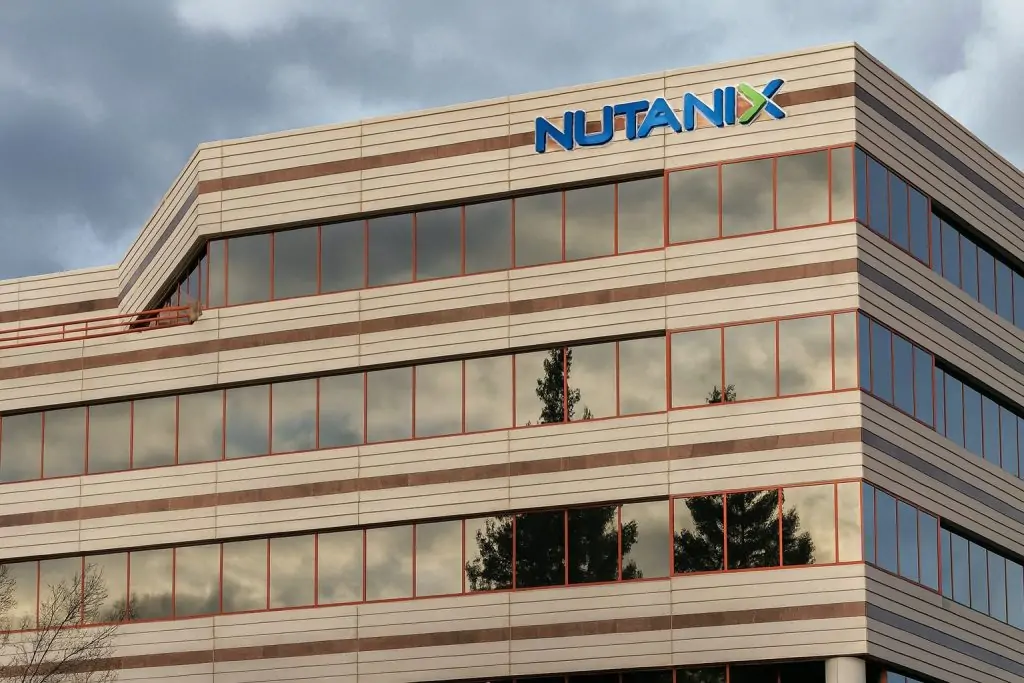Robinhood Markets, Inc. (NASDAQ: HOOD) is back in the spotlight today, with the stock surging after the online broker unveiled a major push into regulated prediction markets via a new futures and derivatives exchange built alongside Susquehanna International Group.
As of late trading on Wednesday, 26 November 2025, Robinhood shares are changing hands at around $125–$126, up almost 9% on the day from a previous close near $115.57. That move makes HOOD one of the standout gainers in a broader U.S. market that is itself rallying into the Thanksgiving holiday. [1]
The jump caps a remarkable year: depending on the data source, Robinhood is up roughly 230% year‑to‑date, vastly outpacing the Nasdaq’s ~20% rise over the same period. [2]
Below is a full breakdown of what is moving the stock today, what the new prediction‑markets venture actually is, how it ties into Robinhood’s blowout Q3 results, and what analysts and institutions are now saying about HOOD.
Robinhood stock price today: HOOD on 26 November 2025
- Last price: about $125.86
- Daily move: up $10.29 (+~8.9%) versus yesterday’s close of $115.57
- Intraday range: $116.96 – $125.92
- Market capitalization: roughly $127 billion
- Trailing P/E ratio: about 58x earnings
- EPS (trailing 12 months): about $2.40
- Volume: just over 20 million shares traded, versus an already high average volume.
On a longer view, Robinhood is trading:
- Within a 52‑week range of roughly $29.66 – $153.86, meaning shares are still well off their early‑October highs but more than quadruple their 52‑week low. [3]
In other words, today’s rally builds on an already massive recovery: HOOD has transitioned from a controversial meme‑stock era broker to a high‑growth, multi‑line fintech with a triple‑digit‑billion valuation.
The big catalyst: a 90% stake in LedgerX / MIAXdx and a new prediction markets exchange
The key driver behind today’s move is Robinhood’s announcement that it is teaming up with Susquehanna International Group to acquire a 90% stake in a regulated derivatives exchange business currently operated by Miami International Holdings (MIAX).
Depending on the outlet, the unit is described as LedgerX or MIAXdx, but in both cases it refers to a CFTC‑regulated derivatives platform originally associated with FTX and now under MIAX’s umbrella. [4]
Deal structure and strategy
According to filings and media reports:
- Robinhood and Susquehanna will jointly acquire 90% of the derivatives exchange entity; MIAX will retain the remaining 10% equity stake. [5]
- The platform holds key CFTC licenses — including Designated Contract Market (DCM), Derivatives Clearing Organization (DCO) and Swap Execution Facility (SEF) registrations — allowing the joint venture to list and clear futures, options and event‑based prediction contracts directly. [6]
- Robinhood will control the new venture and route its retail derivatives order flow into the exchange, while Susquehanna acts as the day‑one liquidity provider and market maker. [7]
- The transaction is expected to close in Q1 2026, with the new exchange targeting a 2026 launch, subject to regulatory approvals. [8]
The deal is not just about owning another trading venue. It’s about Robinhood owning the “pipes” underneath one of its fastest‑growing businesses.
Why prediction markets matter so much to Robinhood
Robinhood introduced prediction markets — event contracts on things like elections and sports — earlier in 2025 through partners such as Kalshi. That business has exploded:
- More than 1 million customers have already traded prediction contracts on Robinhood.
- Roughly 9 billion contracts have changed hands since launch in March 2025. [9]
- In Q3 alone, Robinhood recorded 2.3 billion event contracts traded; October 2025 alone exceeded the entire Q3 total, highlighting rapid acceleration. [10]
By acquiring a majority stake in a CFTC‑licensed exchange and clearinghouse, Robinhood will no longer be just a front‑end app routing prediction trades elsewhere. The company will:
- List the contracts itself,
- Clear them internally, and
- Capture a larger share of trading economics — something Piper Sandler estimates could lift the unit’s economics by roughly 45% for prediction contracts routed through the new joint venture. [11]
At the same time, Robinhood executives say demand from users is strong enough to justify investing directly in core infrastructure, rather than relying entirely on external venues. [12]
A crowded race into event‑driven markets
The timing of the MIAX/ LedgerX deal lines up with a wave of institutional interest in prediction markets:
- A U.S. federal court decision easing a CFTC prohibition on election betting has opened the door for more mainstream, regulated event contracts. [13]
- Giants like Intercontinental Exchange (ICE), CME Group and Cboe are exploring or funding prediction‑market initiatives. [14]
- Crypto‑native platforms such as Polymarket and Kalshi are seeing billions in monthly volume, underscoring the scale of the opportunity. [15]
Against that backdrop, analysts at Bernstein argue that Robinhood’s edge is its distribution: tens of millions of funded retail customers already inside its app. They see the MIAX/ LedgerX acquisition and new CFTC‑regulated exchange as a way for Robinhood to capture a bigger share of the prediction‑market revenue pool just as rivals like Coinbase prepare their own offerings for December. [16]
That narrative — Robinhood turning a viral new product into a full‑stack business line — is a big part of why the stock is ripping higher today.
Q3 2025 blowout results and crypto growth set the stage
Today’s rally doesn’t exist in a vacuum. It’s sitting on top of exceptionally strong Q3 2025 financials.
According to Robinhood’s official Q3 report:
- Total net revenue doubled year‑over‑year to $1.27 billion (+100%).
- Transaction‑based revenue jumped 129% to $730 million, driven by:
- Crypto revenue of $268 million, up 300% year‑on‑year,
- Options revenue of $304 million, up 50%, and
- Equities revenue of $86 million, up 132%. [17]
- Net interest income — largely from margin balances and cash sweep programs — climbed 66% to $456 million. [18]
- Net income surged to $556 million, with diluted EPS up 259% year‑over‑year to $0.61. [19]
On the platform side:
- Funded customers reached 26.8 million, up 10% year‑over‑year, while investment accounts rose to 27.9 million.
- Total platform assets climbed to $333–343 billion (depending on whether you look at Q3 or October snapshots), more than doubling year‑over‑year. [20]
- Net deposits were $20.4 billion over the last year, implying strong organic growth. [21]
- Robinhood Gold subscribers hit 3.9 million, up 77%, helping push ARPU to $191, an 82% year‑over‑year jump. [22]
Management also highlighted that:
- Robinhood now has 11 business lines generating around $100 million or more in annualized revenue, including newly added verticals like Prediction Markets and Bitstamp, the crypto exchange it acquired in mid‑2025. [23]
While the stock dipped briefly after the Q3 print earlier this month, some outlets noted that weakness as a pause after a massive year‑to‑date run, not a sign of deteriorating fundamentals. [24]
Put simply, the prediction‑markets deal arrives on top of a quarter that already showed triple‑digit growth in both revenue and profit — and that’s a powerful combination for momentum‑oriented investors.
Analysts stay bullish: fresh Buy ratings and rising price targets
Today’s news has triggered (and, in some cases, followed) a wave of analyst commentary that is broadly constructive on HOOD.
Needham, Piper Sandler and others
- Needham & Company today reiterated a Buy rating on Robinhood with a $145 price target, implying roughly 15% upside from current levels. The firm points to a strong Q3 beat (EPS $0.61 vs $0.41 expected, revenue $1.27B vs $1.15B) and robust user growth, while also flagging heavy insider selling as a nuance investors should watch. [25]
- Piper Sandler reaffirmed its Overweight rating and $155 target, explicitly calling the new prediction‑markets exchange “quite positive” and estimating Robinhood could lift its economics on prediction contracts by around 45% once the joint venture is fully ramped. [26]
- Other houses — including Citizens JMP, Mizuho, Citigroup and Loop Capital — have recently raised their targets into the $135–$180 range, with labels ranging from Neutral to Market Outperform and Outperform. [27]
A broader snapshot shows:
- MarketBeat tracks 14 Buy, 8 Hold and 1 Sell ratings, for a “Moderate Buy” consensus and an average target near $137. [28]
- Investing.com’s analyst compilation shows 23 analysts with an overall Buy consensus, an average 12‑month target around $152 and a high estimate of $180. [29]
- Reuters data via TradingView notes that 18 of 25 brokerages rate HOOD “buy” or “strong buy,” with a median price target of $155, up from $120 in late August. [30]
Put together, the street view remains decidedly bullish, even after the stock’s huge run.
Institutional interest: big funds pile in
On the institutional side, data aggregators point to steadily rising ownership of HOOD shares, with over 90% of the float now in institutional hands, according to some estimates. [31]
Recent commentary from Yahoo Finance has highlighted Bridgewater Associates among the large investors increasing their exposure to Robinhood in 2025, framing HOOD as a high‑beta way to play retail‑trading and prediction‑markets growth — though the exact size and timing of those positions aren’t fully disclosed in public snippets. [32]
The combination of sell‑side enthusiasm and institutional accumulation adds fuel to today’s move, especially in a holiday‑thinned market where incremental buyers can push high‑momentum names sharply higher.
How today’s rally fits into the bigger Robinhood story
With HOOD now worth around $127 billion and trading near 58x trailing earnings, investors are clearly paying up for growth. [33]
Here’s how the pieces fit together:
- Core brokerage is humming.
Customer growth, trading volumes and net interest income are all expanding rapidly, powered by equities, options and crypto. Q3’s 100% revenue growth and 259% EPS growth underscore that this is not just a meme‑time fad. [34] - Prediction markets are a breakout business line.
Strong user uptake has pushed event contracts into the ranks of Robinhood’s top‑earning products in less than a year. By buying a CFTC‑regulated exchange and clearinghouse, Robinhood is aiming to keep more of the economics and control the product roadmap. [35] - Crypto and Bitstamp give Robinhood global reach.
Q3 saw crypto revenue triple year‑over‑year, helped by the Bitstamp acquisition and a surge in tokenised and derivatives trading. Management expects Bitstamp and prediction markets each to contribute over $100M in annualized revenue. [36] - Management is investing heavily — and spending is rising.
The company raised its 2025 adjusted operating‑expense outlook to about $2.28 billion, citing higher marketing, growth investments and stock‑based compensation tied to share price performance. [37] - Leadership transition is underway.
Long‑time CFO Jason Warnick plans to step down in 2026 and hand the role to internal finance veteran Shiv Verma, though Warnick will remain as an adviser through late 2026. [38]
All of that means investors aren’t just reacting to a single headline today; they’re repricing an entire business model that’s rapidly broadening beyond zero‑commission stock trades.
Key risks investors should watch
Despite today’s euphoria, there are meaningful risks around HOOD that market watchers continue to flag:
- Regulatory uncertainty around prediction markets and crypto
- Event‑based derivatives — especially those touching on elections or politics — sit under intense scrutiny from the CFTC and other regulators. [39]
- Any reversal of the recent court decision easing restrictions on election betting, or new rules that narrow allowable contracts, could materially affect the size of the addressable market.
- Execution and integration risk
- Folding a complex derivatives exchange like LedgerX/MIAXdx into Robinhood’s infrastructure and culture is non‑trivial.
- The company must integrate technology, risk management and compliance while maintaining the low‑friction user experience its customers expect. [40]
- Intensifying competition
- Robinhood faces competition on multiple fronts:
- Traditional exchange operators (ICE, Cboe, CME),
- Crypto‑native prediction platforms (Polymarket, Kalshi), and
- Other retail brokers and super‑apps that may copy its product mix. [41]
- Bernstein, while positive, explicitly frames this as a market‑share battle, not a guaranteed win. [42]
- Robinhood faces competition on multiple fronts:
- Valuation and volatility
- After a year in which HOOD has gained more than 200% and its valuation has crossed the $100B mark, several commentators have warned that the stock could be vulnerable to sharp pullbacks if growth slows or sentiment turns. [43]
- The stock’s beta and option activity mean swings of 5–10% in a single day — like today — are not unusual.
- Heavy reliance on trading and interest income
- A large share of revenue comes from transaction volumes and net interest spreads; both are cyclical and can shrink if markets calm down or rates move unexpectedly. [44]
These risks don’t negate today’s news, but they explain why some analysts, even while raising targets, still label HOOD as a “Moderate Buy” rather than a slam‑dunk.
What today’s move means going forward
For readers watching HOOD on Google News or Discover, a few big takeaways stand out from 26 November 2025:
- The market is rewarding “full‑stack” positioning.
Today’s rally is a vote of confidence in Robinhood’s push to be not just a front‑end trading app but a vertically integrated player in prediction markets and derivatives infrastructure. - Prediction markets are moving center stage.
With 9 billion contracts traded in under a year and 1 million customers already engaging with the product, prediction markets have transitioned from novelty to one of Robinhood’s most important growth drivers. [45] - Analyst and institutional support is helping sustain the run.
New Buy reiterations, high‑teens upside targets and growing institutional ownership are all adding credibility — even as some commentators caution that the valuation leaves little room for execution missteps. [46] - Volatility is likely to remain high.
With a high‑growth profile, a leveraged bet on retail trading activity and a front‑row seat in politically sensitive prediction markets, HOOD is unlikely to become a low‑volatility “steady Eddie” any time soon.
As always, today’s article is for information and news purposes only and does not constitute investment advice. Anyone considering exposure to HOOD should weigh the company’s rapid growth and product innovation against its rich valuation, regulatory uncertainties and the potential for sharp price swings.
References
1. www.investopedia.com, 2. www.tradingview.com, 3. in.investing.com, 4. www.reuters.com, 5. www.reuters.com, 6. m.investing.com, 7. www.benzinga.com, 8. www.reuters.com, 9. coincentral.com, 10. www.globenewswire.com, 11. m.investing.com, 12. www.reuters.com, 13. www.reuters.com, 14. www.reuters.com, 15. coincentral.com, 16. www.theblock.co, 17. www.globenewswire.com, 18. www.globenewswire.com, 19. www.globenewswire.com, 20. www.globenewswire.com, 21. www.globenewswire.com, 22. www.globenewswire.com, 23. www.globenewswire.com, 24. finance.yahoo.com, 25. www.marketbeat.com, 26. m.investing.com, 27. www.marketbeat.com, 28. www.marketbeat.com, 29. in.investing.com, 30. www.tradingview.com, 31. www.marketbeat.com, 32. finance.yahoo.com, 33. in.investing.com, 34. www.globenewswire.com, 35. coincentral.com, 36. somoshermanos.mx, 37. www.reuters.com, 38. www.reuters.com, 39. www.reuters.com, 40. www.reuters.com, 41. www.reuters.com, 42. www.theblock.co, 43. www.tradingview.com, 44. www.globenewswire.com, 45. coincentral.com, 46. www.marketbeat.com







